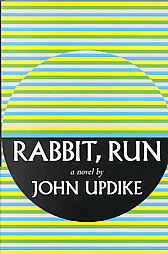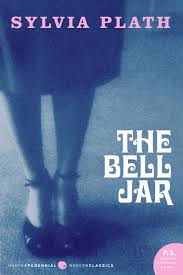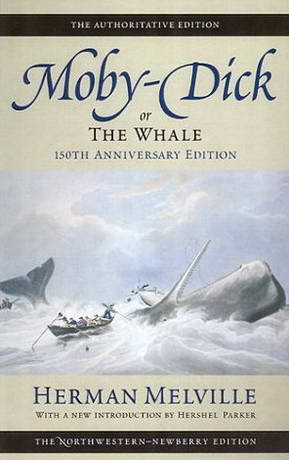Ah yes, the final review. Just when you thought it was over, GANC comes back for one last hurrah. Kind of like all those Freddy and Jason movies. After writing the below commentary, I realized it is rambling, which is unsurprising if you know me. If in my rambling I do not explicitly say, I am so happy that Aaron thought this up, that I took part in it, and found books and authors at times off my beaten path of reading. It is reassuring and encouraging to know that with a little pressure from myself and from the challenge, I can push myself beyond my literary comfort zones and find a few jewels.
I am not sure if this was a subconscious effort on my part or there are more writers here or what, but most of my novels were written by an author from or a book about the South. Having never lived in the North, or really even visited there, I can only assume the North is a dull place with no novel-worthy conflict and a lack of imagination. I kid, I kid! To make a generalization, Southerners are a story-telling people; and slavery, plantations, Civil War, and segregation lend themselves easily to stories and fictional exploration of social constructs. Much of the large societal action in the North occurred in the 1700s and early 1800s, and from what I could find there are not a lot of books from around that time, at least not widely known ones. It is strange, in some ways you can see the shift of the writer concentrate from early America and North to established country and South as you move from the likes of Melville, Hawthorne, James Fennimore Cooper and Poe to Twain, Faulkner, Harper Lee, Capote, and Flannery O'Connor.
The early 2oth century is the place to go for some of the best known and most highly regarded authors. Henry Miller, Faulkner, Steinbeck, Hemingway, Carson McCuller, Capote, Norman Mailer. I have not done much research on this, but I assume part of this is due to FDR's New Deal which encouraged aspiring writers, through the Federal Writer's Project, to document folklore. What is remarkable is the excellence of the books. These authors wrote with purpose, depth and complexity during some of the most difficult days in our nation's history. I wonder how many excellent American books we have lost awareness and knowledge of from before that time, and where all the good books are today. Has America lost its literary creativity for the stable 40-hour work week? Has the creativity been transferred to different forms of written expression (magazines, e-zines, blogs, etc.)? Where are the novels that will transcend generations?
I made a conscious effort to include both female and minority writers. Hindsight being 20/20, I should have read Invisible Man over Their Eyes Were Watching God. Nothing against the latter, but Invisible Man is universally agreed upon as a must-read book. However, I in no way mean to imply that white male authors get all the praise and glory and it was my aim to bring minority and women writers to light. Each of the novels I selected are worthy to stand on their own. While the author's gender, color, and locale all lend themselves to the creative process, each book transcends whatever biases, prejudices and assumptions one may have.
Yes, I did allow myself two indulgences - Lonesome Dove and Giants in the Earth. While in the long run neither will likely be on a "Greatest American Novels" list, they are still worth reading and two I would absolutely consider reading again one day.
To readers who think what I did over 13 months is not possible for them, do not be afraid of challenging texts. Yes, Faulkner has become my literary whipping boy for examples of almost unreadable literature, but that does not mean I am never going to attempt him again one day. Reading some of these authors requires a different cadence, for lack of a better word. This is not John Grisham here; these authors at times used words I needed a dictionary for, paragraphs I had to read over again, and, yes, even a few sly looks at SparkNotes for translation from time to time. Some of these authors need more attention - reading slower, giving yourself more time to read so you can get into the flow of how they write. One of the best things I took away from high school was using a 3x5 note card to write character lists and relationships on for reference. This has saved me lots of time turning back pages trying to figure out if Sam is Susie's father, boyfriend, uncle or estranged brother. It also doubles as a handy dandy bookmark!
These American novels are patriotic, but in a far subtler way than I anticipated. Which probably means they work well as reading for the rest of the world. Probably the one that I felt was most overtly patriotic and stereotypically American was Lonesome Dove, but that could just be my Texan heart beating in time with the cowboys and cattle. East of Eden exhibited this, too, but more in a pride for the land and the bonding of community than "Johnny's gone off to war" sort of pride.
Working through History and English majors in college gave me a broader picture of the periods I was studying. History relays the facts and circumstances while literature shares the mood, society, and sentiment. I now feel like it is hard to have one without the other. Had I gone into The Bell Jar with no knowledge of women's suffrage and the evolving attitude toward women, I may have missed some of the underpinnings of the book. Almost all the books I read these past 13 months are a commentary of the author's view on local, national, and international events. In other words, do not read with blinders on. Supplement literary reading with a quick trip to Wikipedia to read about the author and the book, as usually context is given to the book. And, if it is a history you are reading, take a peek at contemporary authors and see if any books strike your fancy. Follow the bread crumbs and see where they lead.
This was not an easy challenge to complete. Some books I felt would never end as the approach of the 4th came steadily closer. I had to set aside most of my aspirations to read any other book during this time to devote my energies to GANC. Books like carrots dangled temptingly in front of me. In a small way, I can equate it to feel a little like someone on a diet and going out with friends, watching as they eat cheeseburgers, nachos and chocolate cake. Both Aaron and I agreed, after looking at other online book challenges, that we created one of the more time intensive, rule-riddled ones out there. It was the time intensive part that I struggled with more than the rules, though, once I realized there were plenty of great American novels left for me to read.
Challenges are fun! It was always a small competition for me to see Aaron's book before he saw mine each month. And to "beat" him on choices. Only once did we read the same book, and in the same month to boot! (For the curious, it was For Whom the Bell Tolls.) While I need a year off from mandated reading, I would do it again. In fact, Aaron and I already have a running list of ideas for the next challenge. All have easier buy in's, are shorter in length, and are far less constrictive on parameters. Stay tuned!
Thank y'all for reading my reviews. I know it is not everyone's cup of tea, and my posting on food and other things diminished significantly, but I am glad you stuck with me as I stuck with the challenge. Almost as much as finishing the book and posting each month, I looked forward to the discussion in the comments afterward. Finding out who else has read the book, what they thought, and even suggestions on other books I should read. It is nice to know in a time and place where distractions can be found with every keystroke and channel change, that people are still reading books, both old and new. I hope that my voracity for books never weakens and I look back on this past year as a milestone year, always remembering to step outside my boundaries, both with books and in life, and try new things. Sometimes Faulkner happens, but more often than not its Steinbeck and Hemingway.














